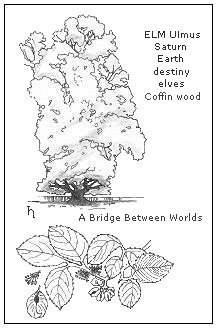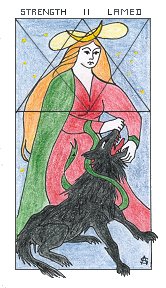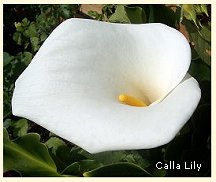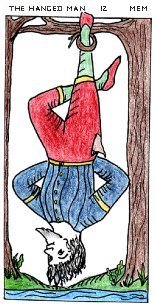
It is impossible to write about the next poem, ‘Elm’ (dated 12-19 April 1962), without referring to what Ted Hughes wrote about it. After tracing in Plath’s journals her ‘Jungian’ drama of “alchemical individuation of self”, which “began with a ‘death’, which was followed by a long ‘gestation’ or ‘regeneration’, which in turn would ultimately require a ‘birth’ or ‘rebirth’”, Hughes describes how she “started a poem about a giant wych elm that overshadowed the yard of her home”1.
For him, the drafts of the poem show Plath’s struggle to control the poem, to force it into order when “the lines try to take the law into their own hands”. Ultimately, “it burst all her restraints and she let it go”, and this was the instant when, according to Hughes, “the Ariel voice emerged, in full, out of the tree”, and “from that day on it never faltered again“.
Hughes saw ‘Elm’ as a poem of ‘birth’, and also as the poem which marked Plath’s confrontation through the dramatic speech of Ariel, with all that threatened “the nucleus of self” which she had for so long been “nursing and repairing”2.
Elms, in British and North-European folk–lore, have many magical associations with birth and death and Plath almost certainly knew about these, if not through her own reading, then through her husband’s extensive knowledge of those subjects. Elms are believed to be a bridge between the world of the dead and that of the living and, partly for this reason, elm–wood is traditionally used for coffins. Elm trees are also associated with elves, and the elf–mounds on which they grow are a source of inspiration and communication with the spirits of the dead.
The elm trees at Court Green grew on just such an elf-–mound3, and in Hughes’ poem, ‘The Afterbirth’4, he writes that after burying the afterbirth of their newborn son in “a motherly hump of ancient Briton/ under the elms”, a hare – “a witchy familiar” (and a form of the Goddess) – “came hobbling down from under the elms/ into our yard”.
Elm , too, was the wood from which Hughes made Plath’s writing desk. On 15 September 1961, she wrote to her mother that Warren, her brother, was helping Hughes to sand “an immense elm plank which will make me my first real capacious writing table”5. In Hughes’ poem ‘The Table’6, he describes this plank as “Rough-cut for coffin timber”, and he depicts Plath “Bent over it, euphoric”, and able to “divine in the elm” the words which would open “a door / downwards into [her] Daddy’s grave”.
So, the elm in Plath’s poem has associations with the Goddess, with magic, with the spirit world and with death and rebirth, regardless of any link which the poem might have with the Tarot.
‘Elm’ is a powerful, sensuous poem, full of the sounds, shape and movement of an ancient tree on a windy, moonlit, Autumn night. What makes it an Ariel poem is not just the speaker’s ‘voice’, but the witchy “madness” and the atmosphere of fear engendered by words like “atrocities”, “poisons” and “violence”; by the “merciless”, scathing presence of the jealous, “barren” moon; by the terrifying, malign, feathered “dark thing” that sleeps in it; and by the “murderous” face which “petrifies the will”.
Although the speaker is reporting the elm’s speech, the identification between speaker and tree begins at line 27: “How your bad dreams possess and endow me”. From then on, the malignity, thoughts and speech belong to both. It is hard, therefore, to see the magical, triple repetition of “that kill” in the final line as any kind of banishing, as the triple repetitions were in ‘The Jailer’. It seems, instead, to be an affirmation – and a recognition – of the “isolate, slow faults” which have so agitated and poisoned the speaker’s heart and mind.
Interestingly, Plath wrote “Jealousy” and “Stigma (of selfhood)” on a manuscript draft of ‘Elm’7, and jealousy may well be the dark malignity which sleeps in her speaker and conjures images of irretrievable loved ones to agitate her heart and petrify her will. Jealousy, too, may be one of the “isolate, slow faults” – a stain, a “Stigma (of selfhood)” which will kill rather than heal8. Plath certainly recognised jealousy in her own personality. She diagnosed it in herself quite often in her journals, and on 22 October 1959, she wrote in a journal note fragment: “Ideas are tyrants to me: the ideas of my jealous, queen-bitch super ego”.
Again, it seems that in ‘Elm’ Plath was recognizing and facing her inner demons.


In terms of the Tarot, ‘Elm’ is aligned with Strength (card 11), which depicts a woman holding open the jaws of a fearsome beast, which may be a wolf or a lion. One common occult interpretation of this card is that it symbolizes the female essence controlling animal passions. And that seems appropriate to a poem in which Plath has the strength to face and control (within the poem) a destructive emotion like jealousy. But she seems to have been facing these same demons in ‘Event’, which was written a month later (dated 21 May 1962), so why might she choose ‘Elm’ to occupy this position in her Ariel sequence rather than ‘Event’?
Rákóczi suggests that the card represents “the triumph of spirit over matter”, and he describes the initiate at this stage as having “passed through the fires of unbridled passion, then through extreme asceticism”9. This does not seem to have much relevance to either ‘Elm’ or ‘Event’. However, there is a curious connection in ‘Elm’ between the magical personification of the tree, the elements and the moon, and Rákóczi’s description of the teachings of so–called ‘Heresy Schools’, where, he writes, the initiate must, at this stage, “have the power to draw from the depths of the hidden forces of the earth, the nature Gods and their elementals”.
If Sylvia was using The Painted Caravan to order the Ariel poems some time after they were written, then ‘Elm’ may well have seemed to best fit the above interpretations of the card of Strength. And, since the energies involved were contained within her carefully crafted poem, she may have felt she could safely ignore Rákóczi’s warning that “opening the dark recesses of nature”, in the way that the Heresy Schools teach, is extremely dangerous unless attempted for “the highest ends” and under the guidance of “a noble and genuine Master”10.
The poem, however, is still charged with those energies. And the feelings of fear, loss and inadequacy which permeate the last five stanzas culminate in the triple repetition – “that kill, that kill, that kill” – which has great destructive power.
Perhaps as an antidote to this, Plath chose the calm and moving blessings of ‘The Night Dances’11 (dated 4-6 November 1962) as the next poem in her book. Yet, even this poem is pervaded by images of loss and emptiness: nothing, however beautiful, lasts, except perhaps in memories and in the poem which contains them.
Yet, the ambiguity of ‘surely’ in line six expresses, in the contact of the lines immediately before and after it, the speaker’s hopeful belief that the “pure leaps and spirals” of the child’s dance will travel the world forever. And at the same time, isolated by the poet in a single line – “Surely they will travel” – it also makes a statement of certainty that surely (certainly, safely) they will do so.
Almost all the things the speaker mentions in the poem are abstract or ephemeral: “a smile”, a baby’s dancing, his “small breath” with its delicate smell of “drenched grass”, the “mathematics” of his “leaps and spirals” which “flake off” into cosmic space, even the snowflakes and their touch on eyes, lips and hair, melt and are “nowhere”.


The beauties associated with the child are linked by the speaker with “lilies, lilies”: the calla lily, with its single white spathe folded in on itself like “cold folds of ego”; and the tiger lily, “embellishing itself” with dark spots on its hot orange spread of petals. Both are ephemeral; but the flesh of lilies is un-reproductive – it literally “bears no relation”. And the beauty of the child’s dancing, which is a spontaneous, selfless “gift” given by the child and taken and treasured by his mother, also “bears no relation” to the beauty of the lilies, which is only an enticement, a means of attracting pollinators to their reproductive parts.
The ambiguities and the dualities throughout this poem, are remarkable. The poem is written in couplets. There is ambiguity in words and phrases: even the title encompasses both the child’s dancing and the cosmic dance of the leaps and spirals which travel the world and fall, like planets, in the night. The repetition of ‘lilies’ is further defined by the mention of two different species with completely different symbolism: the calla lily is a symbol of purity and of the Virgin Mary; and the tiger lily is linked with the big cats of the goddess in her most fecund and predatory form.
The focus of the poem moves between the child in the cot and the speaker (or mother). There is warmth and coldness, movement and stillness, remembering and “amnesia”, earth and heaven.
Yet, all the beauties and dichotomies in the poem end up, in the final, solitary word of the poem, “Nowhere”. So, the speaker, and perhaps the poet, are left facing a void.


What, then, has all this to do with ‘The Hanged Man’ (card 12), with which it would be linked in the Tarot journey?
The figure on this card, hung upside-down by one foot from a branch, is linked in mythology with Attis and with Odin, and, so, to sacrifice in the pursuit of fertility and occult wisdom. The traditional divinatory meaning of this card is of a time of suspension and voluntary sacrifice in the transition from the worldly to the spiritual world.
There is no sacrifice in Plath’s poem. But the mood of the speaker is one of quiet reflection and reverie, which does suggest a suspension in time. In mythology, too, all dualities belong to the two–headed god Janus, the God of the Threshold. He looks to the past and to the future, suspended in time like the Hanged Man, and like Plath’s speaker.
In addition to this, Rákóczi, in The Painted Caravan, writes that the initiate is now on a threshold below which there seems to be a “yawning abyss”, “a void”, a “great negation” which is the negative aspect of God12, and which must be crossed before the journey can continue. This threshold, too, on the brink of negativity and emptiness, seems to be reflected in Plath’s poem.
So, ‘The Night Dances’ does beautifully express some of the important symbolic meanings of The Hanged Man, and it could well have been written with this particular Tarot card in mind.


The next poem, ‘The Detective’ (dated 1 October 1962), was written a month before ‘The Night Dances’, and it marks a harsh return in the Ariel sequence to unpleasant, deathly imagery and Plath’s cold, vituperative Ariel ‘voice’. And with its death valley, its “killer”, its “poisons” and its horrific punishments, this poem could well be said to describe Death, the card with which its position in the Ariel sequence would align it.
Death (card 13), in the traditional Tarot de Marseille deck and in The Painted Caravan, is shown as a skeleton with a scythe, on ground which is strewn with dismembered body parts. Unlike Plath’s poem, however, there are signs of regeneration, and green sprouting plants grow from the dark soil and, sometimes, from bones and severed limbs.
In Tarot tradition, the skeleton symbilizes the death of all that is mortal and finite but, as the plants on the card indicate, this is not an end but a necessary step on the journey to rebirth. Between death and rebirth, the initiate’s spirit must enter the void with only intuition, instinct and feeling for guidance. This, as Rákóczi writes “is the dark night of the soul”, in which there seems to be nothing beyond “the painted curtain of the material world” which has now been left behind.
Plath’s poem, however, is firmly set in the material world. There is “the smell of polish”, “plush carpets”, a “wireless”, cups, sunlight, details of landscape, cows, and a very graphic and physical dismembering of the body before “vaporization”.
Nor is there any suggestion in the poem of the guiding power of instinct, intuition or feeling. Instead, the speaker is clinical and analytical, and the only possible guide is the unlikely “Watson”.
Yet, “no one is dead” and “there is no body”. Both of which statements suggest that the “case without a body” could be the disembodied soul or spirit of the initiate. Although it could, of course, simply refer to the mystery which the detective must solve, and/or to the house from which the body is said to be missing but in which the “she” of the poem’s first line is “arranging cups” or is “at the window, listening”.
Death certainly pervades this poem and in spite of the ‘detective’ speaker’s rational, analytical self–control, by the end of his nightmare description of dismemberment the moon’s dark, malign influence hangs over everything. It smiles at the cruel punishments and at the skeletal children; and ultimately, its phosphorescent glow, lighting a single ominous “crow” in a tree, is all that remains.
The whole mystery proposed by this poem is designed to suggest that the speaker is a detective, and the mention of Watson suggests it is Sherlock Holmes. But in terms of an initiatory journey, the search by the Goddess Isis for the dismembered body of her husband/brother, Osiris, would be more appropriate, since this presages rebirth and is more closely linked to the regenerative symbols on the card.
Curiously, Rákóczi links Isis and Osiris with the previous card in the Tarot sequence, The Hanged Man. And not only does his description of the search by Isis for the missing body parts of her slain and dismembered husband reflect the mystery and some of the imagery in ‘The Detective’, there is also a reference to the empty sarcophagus (like a “case without a body” in Plath’s poem) in which Osiris’s body parts will be reassembled ready for rebirth.
To connect ‘The Detective’ with either Death or The Hanged Man Tarot card on such flimsy evidence is, I think, to be like a drowning man clutching at straws. Yet the possibility remains that Rákóczi’s reference to the story of Isis and Osiris, which, perhaps confusingly, begins on a page opposite the picture of the Hanged Man card and is continued on the page opposite the picture of the Death card, may have influenced Plath’s positioning of ‘The Detective’ in her Ariel poems.
REFERENCES AND NOTES
1. Hughes, T. ‘Sylvia Plath and Her Journals’, Winter Pollen, pp.178-188.
2. Hughes, T. ‘Collecting Sylvia Plath’, Winter Pollen, p.179.
3. “The house in Devon was overshadowed by a giant wych-elm, flanked by two others in a single mass, growing on the shoulder of a moated prehistoric mound”: Ted Hughes’ note for this poem in Sylvia Plath: Collected Poems, p.291. A photograph of the elms can be seen in a Crowther_Steinberg.pdf ‘These Ghostly Archives 3’. by Gail Crowther and Peter K.Steinberg, Plath Profiles 4, Summer 2011, p.134.
4. Hughes, T. Birthday Letters, Faber, 1998, p.131.
5. Plath, A (ed.), Sylvia Plath: Letters Home, p.429.
6. Hughes, T. Birthday Letters, p.138-9.
7. Sevenson, A. Bitter Fame, p.221.
8. ‘Selfhood’ in Jungian psychology is the goal of wholeness which requires a balance between opposing forces of personality.
9. Rákóczi, The Painted Caravan, p. 47.
10. Rákóczi, The Painted Caravan, p. 48.
11. “A revolving dance which her baby son performed at night in his crib”: Ted Hughes’ note to this poem in Sylvia Plath: Collected Poems, p.294.
12. Rákóczi, The Painted Caravan, p.49.